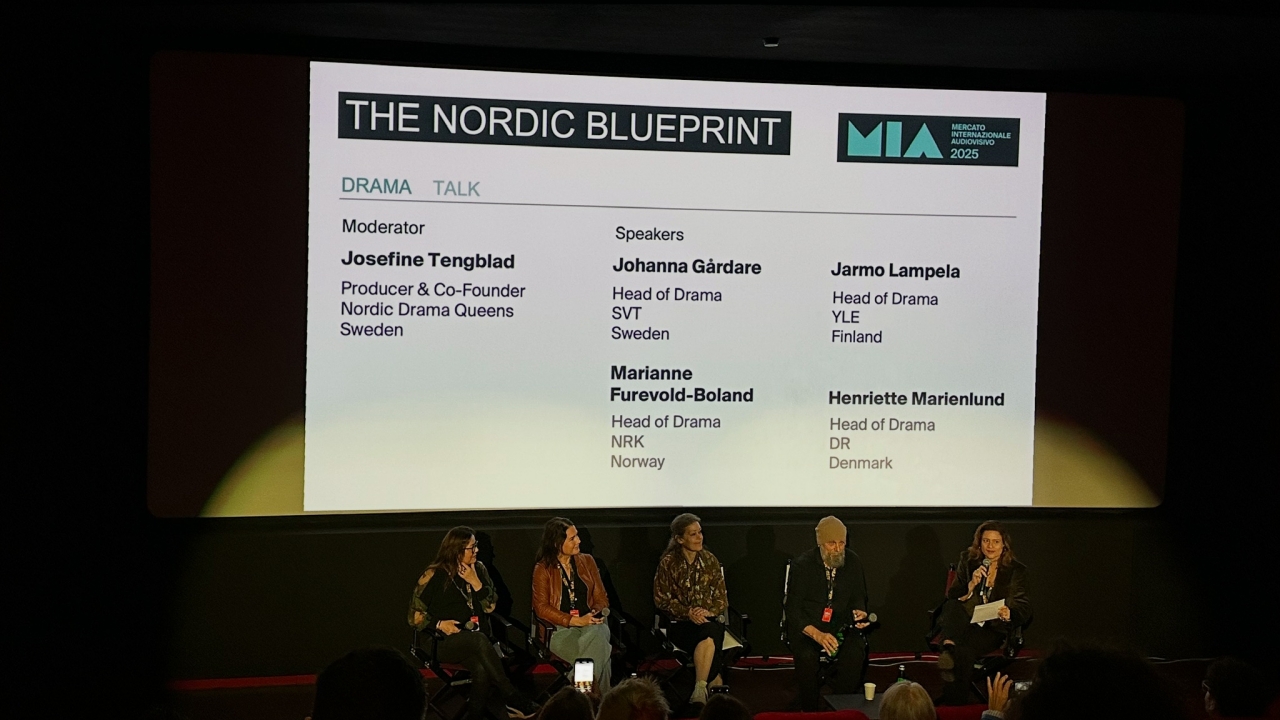The panel The Nordic Blueprint took place this morning as part of the Drama section of MIA | Mercato Internazionale dell’Audiovisivo, bringing together for the first time on stage the heads of drama from the four main Nordic public broadcasters: NRK, YLE, SVT, and DR.
The session offered a unique overview of the editorial strategies that made the Scandinavian model of television production renowned worldwide, now regarded as an international benchmark. The four Heads of Drama shared their experiences and insights on the evolving challenges of today’s market, marked by shifting audiences, changing viewing habits, and an industry undergoing rapid transformation.
A particularly striking figure was also highlighted: while global commissioning has dropped by 15%, Nordic broadcasters recorded a +24% increase in the first quarter of 2025 alone—confirming the strength and innovative capacity of their production ecosystem.
Marianne Furevold-Boland, NRK – Norway, stressed the importance of staying attuned to audiences and experimenting with new production models: “We need to make sure that we develop the stories that our audiences want, exploring new production methods and experimentation”.
For Jarmo Lampela, YLE – Finland, innovation also lies in format development: “Short comedies are doing well, also on linear television. Short form content was thought especially for young audiences”.
Johanna Gårdare, SVT – Sweden, pointed out the increasing difficulty of maintaining originality in a shrinking market:
“The biggest challenge right now is the shrinking market: we struggle to mantain renewal of the content. Production companies are very responsive to commissioners’ requests, but originality remains what we are truly looking for.”
Finally, Henriette Marienlund, DR – Denmark, reflected on the generational shift also affecting public broadcasters: “As public broadcasters, we’re challenged by the fact that young audiences go straight to streaming platforms and social media”.
Moderated by Josefine Tengblad, CEO & Co-founder of Nordic Drama Queens, the panel offered a shared perspective on a key takeaway: local storytelling remains the driving force behind the authenticity and export power of Nordic drama—stories that speak to the world while staying deeply rooted in their territories.

